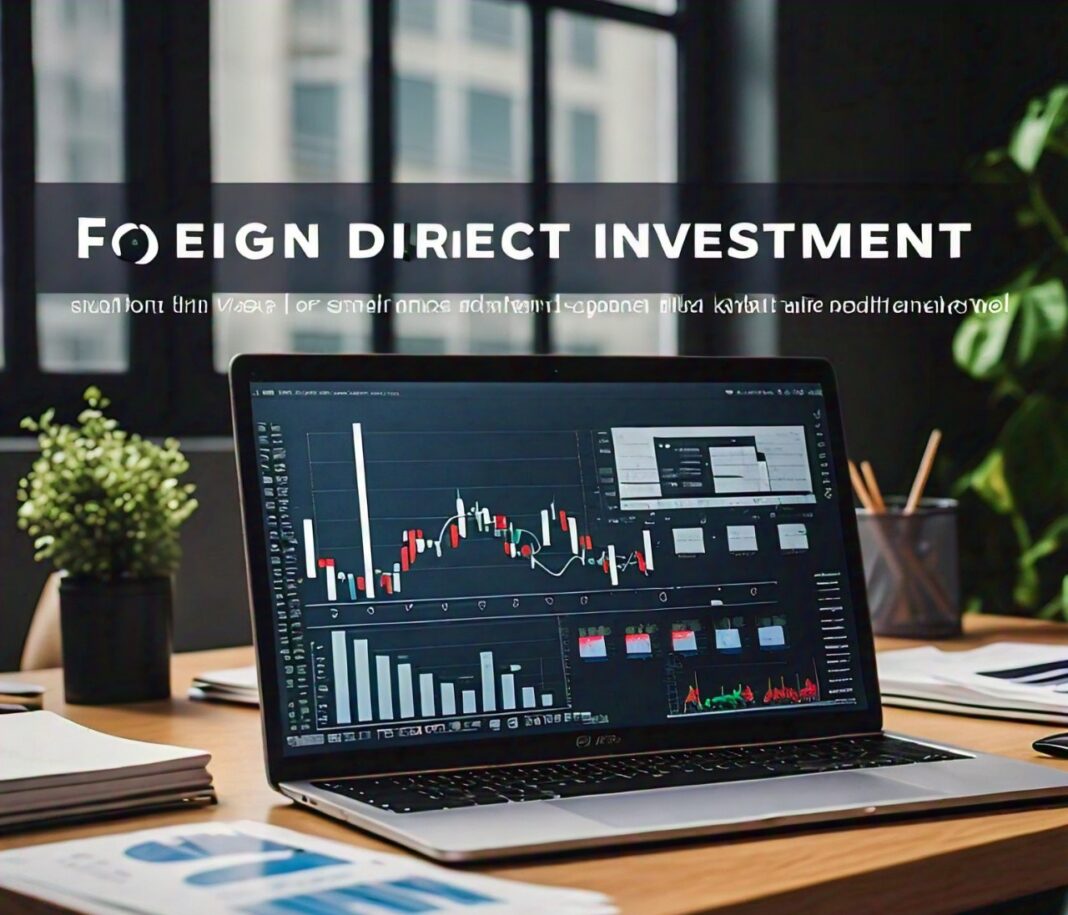To many, investing is reserved only for the rich, but that is a common myth. You don’t have to have a lot of money to invest in something. In fact, with technology, many investment options today are within reach, even for those with small amounts of money. This gives you several ways to begin a long-term financial growth process with as little as a modest amount of money as early as possible.

This article will walk one through the process of investing with small money, deliberating on the best ways to maximize returns, explaining how one can avoid common mistakes made by first-time investors. At the end, you will know what it takes to feel confident in starting your investment journey with whatever budget size.
1. **Why Invest?
Before getting into how to invest with small money, it is important initially to touch on why investing is important. Money saved in a bank account is safe, but doesn’t often offer much for growth. When you invest, you put your money to work for you, and thus your money grows over time with compound interest, among other ways of market returns.
The Benefits of Investing
Building Wealth Over Time: It allows your money to grow and compound over time, which will substantially build greater wealth over a long period.
Beating Inflation: Money will lose purchasing power over time because of inflation. Investments, especially those in the stock market, tend to be well ahead of inflation over a long period of time, meaning at least retaining and building the value of one’s money.
Achieving Financial Goals: Be it retirement, home, or children’s education, investing will get you to your financial goals faster than saving alone can.
2. Getting Started with Little Money
You might feel discouraged by the thought of investing with a tiny sum of money, but there are several ways to get started that are easily accessible. With online platforms and mobile apps increasing at a rapid rate, investing has never been cheaper. It does not take thousands of dollars to get into the market. You can begin investing literally with dollars.
1. Start with Micro-Investing Apps
Microinvesting apps revolutionized the way one invests by even making it possible to invest as low as $1. These applications allow a user to invest spare changes or small sums of money in a diversified portfolio.
Acorns: The purchases you make from this app will be rounded off to the nearest dollar. Money is invested into a portfolio through the investing of the spare that is received. For example, buying coffee at $3.75 will be rounded off to $4.00; the difference, 0.25 dollars, will be invested.
- Stash: Stash gives you the capability to invest in stock and ETF fractions, which can enable you to invest small pieces in well-recognized companies and funds. The application also contains educative content to help one learn more about investments.
Robinhood: Robinhood is a commission-free trading application that will have you investing in stocks, ETFs, and cryptocurrencies from the very start-with no minimum account requirement. Hence, it’s really low friction to get a newcomer started without some big upfront investment there.
2. **Employer-Sponsored Retirement Accounts
If your employer has a 401(k) or equivalent, it is a great place to get started with little money. Many employers even offer matching dollars, essentially free money added in your retirement savings.
- Contribute as Much as You Can: Even with the smallest percent of your salary, it is worth it to begin. The contributions from you and any matched money from your employer will really add up over time.
- Tax Benefits: Contributions to a traditional 401(k) are tax-deferred; you do not pay taxes on the money invested until your money is withdrawn during retirement. By that time, your investment may really have grown since it would be tax-free.
The good news is that most people just think you have to buy whole shares of stock, and those can be pretty expensive. What’s called a fractional share-a lot of companies are now offering this-means you don’t have to buy a whole share of stock; you can buy a portion. That means you could take a few dollars and invest in higher-priced stocks like Amazon or Apple.
- Fractional Shares through Brokerages: Popular platforms include Robinhood, Schwab, and Fidelity, all of which offer fractional share investing to make the creation of a diversified portfolio much easier for people with limited funds.
4. Use Robo-Advisors
Robo-advisors are automated services that invest on your behalf. These algorithms build and rebalance your portfolio based on your tolerance for risk and financial goals. Many robo-advisors have low minimum deposits and are ideal for investors seeking to handle their investments without much hassle.
This can be done through betterment or wealthfront, as both of them are considered to be the pioneering robo-advisors. There is no minimum balance required for the betterment, and very minimal fees are charged. It creates diversified portfolios comprising bonds and equities and rebalances them on its own to keep them on target with your goals.
Wealthfront – This is another pioneering robo-advisor; Wealthfront offers automated portfolio management, with a minimum investment of $500. The service offers sophisticated services, like tax-loss harvesting, to maximize your after-tax returns.
3. Maximizing Your Investments
Returns on your investment should be sought even if the amount of money you are investing is small. Following are some of the strategies for maximizing returns:
1. Dollar-Cost Averaging
Dollar-cost averaging is an investment technique that refers to investing a fixed sum of money on a periodic basis, irrespective of the market conditions. It reduces market volatility through taking averages on the cost of your investments.
- Consistency is King: With regular investment, you won’t time the market, which is a very dicey proposition. Instead, you will find your way to buying more at lower prices and fewer at higher prices. This may eventually lead to an averaging of cost per share with time.
2. Reinvest Dividends
One of the easiest ways to make an investment grow is reinvestment, if one invests in stocks or funds that pay dividends. Most platforms offer a DRIP, or automatic dividend reinvestment plan, in which the cash dividends received are reinvested into additional shares of stock or units in funds.
- Compound Growth: Reinvesting dividends allows your investments to grow through compounding; this implies that your dividends will eventually earn more dividends over time.
3. Diversify Your Portfolio
Even with limited capital, one of the surefire ways of managing risks and maximising your returns is through diversification. Diversification involves spreading your money across various classes of assets, industries, and geographical regions to reduce the negative impact brought about by underperformance in some sectors.
ETFs and Index Funds: Both the exchange-traded funds and the index funds will help you to make a very strong diversification. Each of these kinds of funds holds a host of stocks or bonds, but you can only imagine how easy it is to invest in a broad market index such as the S&P 500 with one purchase.
4. Keep Fees Low
With little money, the high fees will eat into your returns when you invest. Make sure to sign up for low-fee investment accounts and platforms so more of the investment gains will remain with you.
- Avoid High Expense Ratios: Go for funds that have low expense ratios-what does that relate to in annual fees, which that fund will collect for managing your money. Index funds and ETFs have naturally lower expense ratios as compared to funds that are actively managed.
- Common Mistakes to Avoid
Investing with less money is one of the viable options to build wealth overtime; however, there are a few common mistakes one should avoid while doing so:
1. Not Starting Early Enough
The biggest mistakes people make in investment are by delaying their investment journey, which is believed in the mind that they don’t have enough money. Of course, due to magic in compounding, small sums add up significantly. The sooner you start, the more time your money has to increase in value.
2. Putting All Your Money in One Investment
Putting all of your money into one type of stock or asset class is extremely risky, especially in the case where one investment goes bad. Diversification can be a very good avenue to spread investment across different asset classes to protect the portfolio.
3. **Short-Term Gains Focus
Investment is a long game, and being over-invested in temporary market ups and downs often leads to knee-jerk reactions such as selling during a market slump. Instead, focus on your long-term goals and don’t make unemotional decisions based on short-term movement in the markets.
4. Overlooking Fees
High fees lead to significant denting of investment returns with a small beginning amount. You should be aware of trading fees, management fees, and expense ratios. Opt for their low-cost alternatives wherever possible.
5. Building a Long-Term Investment Strategy
Once you have begun investing, it will be followed by the construction of a long-term strategy to help you in amassing wealth over time. Here’s how:
1. **Set Clear Financial Goals
Determine what for which you are investing: retirement, house purchase, wealth accumulation-the clarity of vision about your financial goals will help you correctly choose investments and stay focused on them.
2. **Assess Your Risk Tolerance
Every investor has a different risk tolerance; some people have it in their stomachs to take high risks, whereas others do not. The rule of thumb is that higher the risk, the higher the return, though more volatile-which means stocks give higher returns but are highly volatile, while bonds are stable, yielding lower returns. Balance your portfolio based on your risk tolerance.
3. Stay Consistent
The most important thing when it comes to investing is consistency. Invest regularly-the amount isn’t important, but the act of doing so is-and time will grow it even more with an added bonus of compound interest.
4. Rebalance Your Portfolio
As your investments grow, it’s important to periodically rebalance your portfolio to maintain your desired asset allocation. This ensures that your portfolio remains aligned with your financial goals and risk tolerance.
Conclusion
Investing with little money is not only possible but also a smart way to start building wealth over time. By leveraging tools like micro-investing apps, fractional






